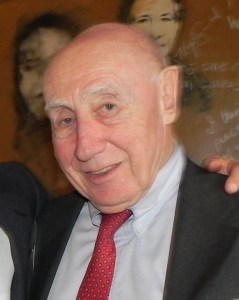
Pablo Eisenberg
Pablo Eisenberg
Senior Fellow, Public Policy Institute, Georgetown University
NCRP Board Chair, 1976-1990
“NCRP began as a force to challenge philanthropy, and it actually broke, I think, the dominance of foundations and other giving institutions in terms of how they could act. And it forced many institutions to become more accountable and to provide more justice in their giving. … It’s been a challenge that even some of the stodgiest givers have had to abide by.
“The fact that NCRP introduced accountability to the world of philanthropy is really something to be marked on the 45th anniversary. I remember when foundations never issued reports, and now that’s commonplace. … People know that there are folks looking over their shoulder as they give money.”
John Echohawk
Pawnee Nation of Oklahoma
Executive Director, Native American Rights Fund
NCRP Board Chair, 1991-1999
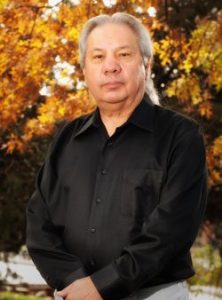
John Echohawk
“As executive director of Native American Rights Fund, one of my primary duties and responsibilities is fundraising to support our legal staff who provide legal advice and representation to Indian tribes, organizations and individuals on the most important national Indian legal issues. These issues include protecting the sovereignty of 574 tribal governments, their homelands, the human rights of their tribal citizens to practice their Native religions and culture, holding the government accountable to their trust responsibilities under the Indian treaties and laws of this country, and the development of Indian law. In doing the fundraising to support this work, the biggest problem I faced was the appalling lack of knowledge about Indians among the funders that I approached.
“I joined NCRP in the late 1970s when it was just starting up because of its mission to promote social justice within the philanthropic sector. Joining the board of NCRP gave me a greater opportunity to educate philanthropy about Native American issues and needs. I think that NCRP’s most important accomplishment during my time as board chair was the visibility that it gave to Native American nonprofits like the Native American Rights Fund and the tremendous needs that we have. I was so honored by my fellow NCRP board members to understand and recognize the important work that we were doing for Native Americans and to elect me as NCRP board chair, giving our Native American legal issues even more visibility.”
Paul Castro
Senior Consultant, Applied Strategy Associates
NCRP Board Chair, 1999-2003

Paul Castro
“During my term, long-tenured Executive Director Bob Bothwell decided to leave NCRP. Bob had been the face of NCRP’s fierce advocacy in support of a growing alternative fund movement as well as its efforts to hold United Way and other philanthropic institutions more accountable around funding in marginalized communities. With Bob leaving, the board was confronted with a dual challenge: Define the character and qualities of the next leader while building a common vision for the organization’s future. After a nationwide search, the board selected Rick Cohen to lead NCRP.
“Despite a leadership transition, the work continued. NCRP continued its examination of how conservative philanthropy advanced its agenda. During this time, NCRP released a report, $1 Billion Dollars for Ideas: Conservative Think Tanks in the 1990s, authored by David Callahan. A second report, Axis of Ideology: Conservative Foundations and Public Policy, authored by Jeff Krehley, Meghan House and Emily Kerman, which remains one of our most popular reports, was released right after my term ended.
“In addition, NCRP pushed for the passage of H.R. 7, legislation that would have increased foundation payout by excluding certain administrative expenses from the qualifying distributions. While the effort was unsuccessful, it raised the timely and important issue of assuring more dollars are directed to a foundation’s charitable purpose.”
Terry Odendahl
CEO, Global Greengrants Fund
NCRP Board Chair, 2003-2005
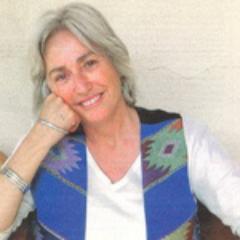
Terry Odendahl
“I vividly remember the first time I attended an NCRP meeting. I was relatively new to Washington, D.C. It was 1977, less than a year after it had formed out of the Donee Group. I was 23 years old, ‘wet behind the ears’ and totally unaware that this gathering would lead me to an unimagined career as both a critic of and worker in the field. Really, at the time, I hardly knew what philanthropy was.
“It was nearly 20 years before I was invited on the board, where I served for over a decade. Pablo Eisenberg was my mentor and other leaders, such as John Echohawk, trained me up in board facilitation. Rick Cohen and Aaron Dorfman showed me how exemplary executive directors operate.
“NCRP has always been a beacon in holding foundations accountable. The publication list is a testament to our advocacy. Were I to pick one piece of research that made the most difference, it would be Sally Covington’s 1997 report Moving a Public Policy Agenda on how and why the conservative foundations had become so effective.
“If I were to cite a campaign I know the most about, which was an accomplishment – but not a victory – it was our effort to raise the private foundation payout from the miserly 5% where it still remains.
“The foundation field still needs NCRP as a watchdog. Let’s continue to support this outstanding work so there is no need for NCRP in another 45 years.”
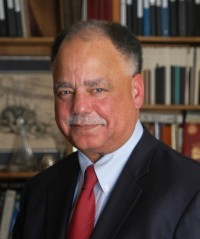
David R. Jones
David R. Jones
President and CEO, Community Service Society of New York
NCRP Board Chair, 2005-2009
“I served on the board of NCRP from 1999-2009 and acted as board chair from 2005-2009. My most significant role as chair was keeping the organization going during a long leadership transition and executive search, which lasted nearly a year. I brought in an interim director and personally acted to reassure funders and policy makers that the organization was both stable and productive even as we sought a new executive director.
“After Aaron Dorfman was brought on as our new executive director in early 2007, I helped the staff in engaging the board in the development of the organizations first strategic plan. During this period, NCRP also released its groundbreaking Criteria for Philanthropy at Its Best assessment, the first effort of its kind to hold foundations to higher standards of efficacy and transparency.”
Diane Feeney
Former President, FACT Services for the French American Charitable Trust
NCRP Board Chair, 2009-2013
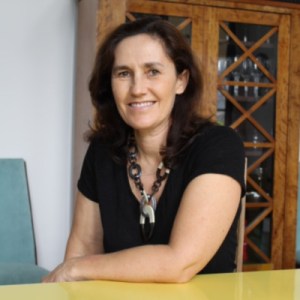
Diane Feeney
“During the time I was board chair, one of the best things NCRP did was determining the return on investment for foundations funding ‘change strategies’ like advocacy, community organizing and civic engagement. NCRP did this through a series of in-depth studies called the Grantmaking for Community Impact Project in 7 different parts of the country that showed how investing in these strategies yielded tangible benefits for families and communities.
“The combined return on investment across all study sites – which included red states, blue states, urban areas and rural areas – was $115 to $1, meaning that for every dollar invested in organizing and advocacy, communities saw $115 in benefits. It was data that few had seen compiled in this way before and a great many foundations to this day still using our analysis to maintain or increase their support for funding advocacy, community organizing and civic engagement.
“We also released reports detailing high impact funding strategies in philanthropy such as a report on arts funding. In this report, NCRP noted how arts funders can increase the equity and fairness of their grantmaking by prioritizing marginalized communities and investing in community organizing and civic engagement strategies within the arts and culture sector. In its environment report, NCRP concluded that environmental grantmakers need to shift their funding away from top-down strategies and invest in the grassroots communities that are disproportionately affected by environmental harms and climate change – a point that has become increasingly important as the impacts of climate change draw closer.”
Sherece Y. West-Scantlebury
CEO, Winthrop Rockefeller Foundation
NCRP Board Chair, 2013-2017

Sherece Y. West-Scantlebury
“I was introduced to NCRP by my colleague and mentor Garland Yates, retired senior associate, Annie E. Casey Foundation. I was nominated to the board by my friend and colleague Dave Beckwith, retired executive director, Needmor Fund. Both are notorious disruptors. I later learned that NCRP was founded by the Donee Group, which was initiated by John D. Rockefeller III (Winthrop Rockefeller’s older brother). NCRP was founded to disrupt.
“Shortly after I joined the board, we released Criteria for Philanthropy at Its Best: Benchmarks to Assess and Enhance Grantmaker Impact. OMG were funders upset! How dare NCRP suggest criteria and try to impose targets on funders was the refrain! There was so much resistance to it, and it was all the buzz at conferences and in philanthropy related editorials for and against Philanthropy at Its Best. It was an exciting time to be part of NCRP.
“When I was was board chair, NCRP launched Philamplify, which had funders on edge because no one wanted to be assessed on their effectiveness based on Philanthropy at Its Best criteria. The Winthrop Rockefeller Foundation piloted Philamplify. We re-examined our grantmaking and relationships with grantees based on the findings. Philamplify and Power Moves together are game changers for philanthropy. They are your essential assessment guide “to determine how well you are building, sharing and wielding power to identify ways to transform your programs and operations for lasting, equitable impact.” Why wouldn’t you want to do that?
“I can only imagine how much more equitable our communities would be today if philanthropy dared to participate and not resist NCRP’s leadership. Disruption is my jam, and I am proud to be a part of NCRP’s movement.”